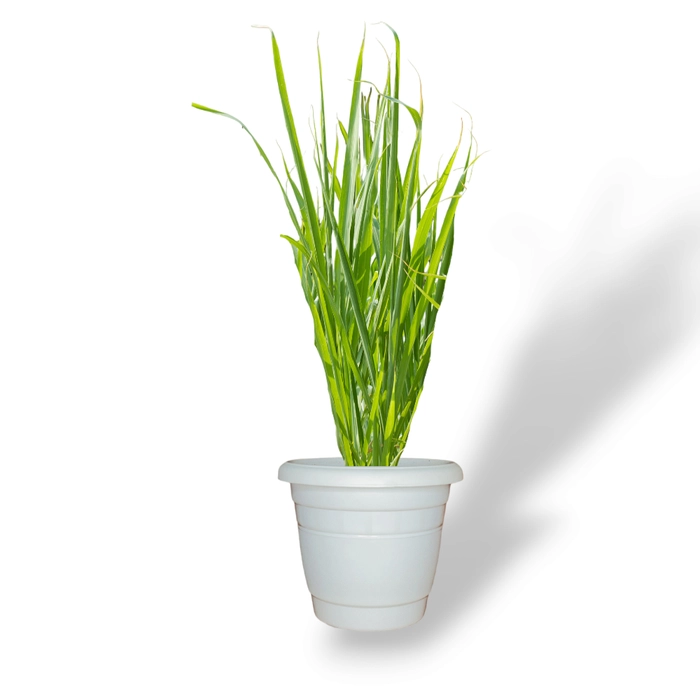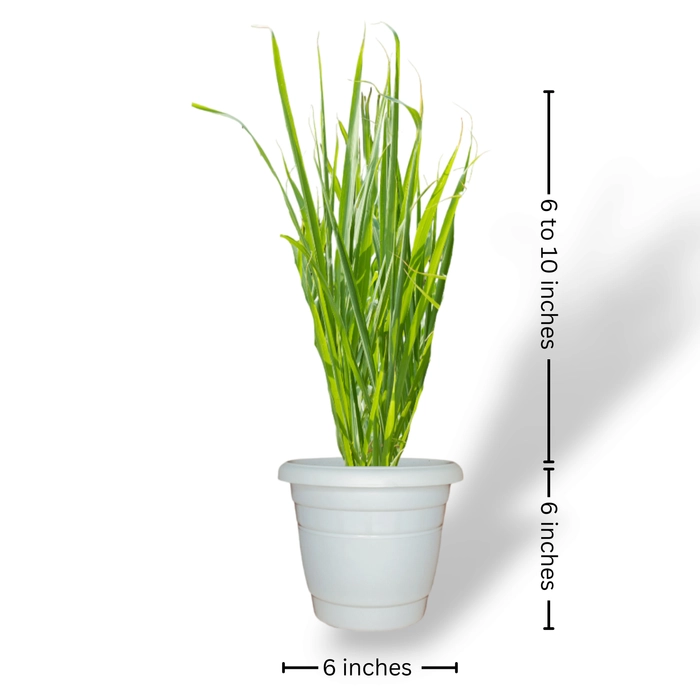Lemon Grass
Description
- Lemon grass, scientifically known as Cymbopogon citratus, is a fragrant herb prized for its culinary and medicinal uses. Lemon grass is characterized by its long, slender green leaves and citrusy aroma. It is commonly cultivated for its flavorful stalks, which are used in various culinary dishes, teas, and aromatherapy products.
Features & Benefits
- Adds a refreshing citrus flavor to a variety of dishes, including soups, curries, stir-fries, and marinades.
- Resilient and low-maintenance, tolerating a range of temperatures and growing conditions.
- Can be propagated from seeds, division of clumps, or stem cuttings, with new plants easily grown from mature stalks.
- Provides additional benefits beyond culinary use, including potential medicinal properties such as digestive aid and insect repellent.
- Features long, slender, green leaves with a lemony fragrance and flavor, commonly used in culinary dishes and herbal teas.
- Grows as a tall, clumping grass, typically reaching about 3 to 6 feet in height.
Care Guide
- Light: Requires full sun to partial shade. Place in a location with at least 6 hours of direct sunlight daily.
- Watering: Keep the soil consistently moist but not waterlogged. Water deeply whenever the top inch of soil feels dry, typically every 2-3 days.
- Soil: Well-draining soil with good organic content. A mixture of garden soil and compost works well.
- Humidity: Tolerates average indoor humidity levels. Mist occasionally if grown indoors.
- Fertilization: Feed monthly during the growing season with a balanced fertilizer diluted to half strength.
- Pruning: Trim back any yellowing or dead leaves as needed to maintain plant health and appearance.





